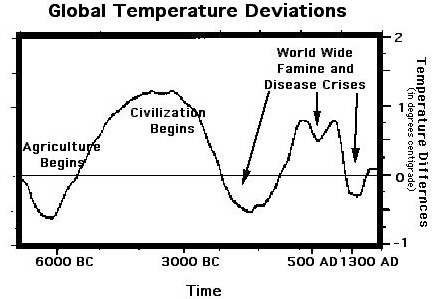Introduction Plants, Plagues and People is the popular lecture class offered to undergraduate non-science majors by the Plant Pathology Department at the University of Florida. It can be taken for either biology or humanities credits. In 1998 it became a web-based distance learning class. One of the motivations for initially offering this class was to introduce the field of Plant Pathology to undergraduate students at the University of Florida. The methodology for accomplishing this goal is not to educate college students about what plant pathology is but to give them an understanding of why plant pathology and agriculture in general are important to their lives. This is done by integrating basic biological principles with the principles of agriculture science and plant pathology. Class Content The distance class is broken into four sections. The first section presents four biological principles that provide the backbone on which the rest of the class is hung. The four principles are: 1.) Change is inevitable, 2.) All life is tied together by the DNA molecule, 3.) Life is a constant competition for scarce resources and 4.) All life is interdependent. The next section, called "Chemical Evolution", begins a journey through time that starts with the big bang and ends with the evolution of the first multicellular organisms. This section covers the basic chemistry of atoms and life's molecules, the evolution of the first life forms (the Prokaryotes), the basic laws of thermodynamics, basic metabolic pathways, nutrition, and the evolution of eukaryotic cells from a merger of prokaryotic cells. This section lays the ground work for an understanding of the idea that life requires a constant source of energy and introduces the students to bacteria, one of the many organisms that compete with us for the our source of energy, glucose. Because some scientists believe that the evolution of eukaryotes was a disease interaction gone array, the concept of disease is defined in this section. The third section, called "Structural Evolution", follows the differentiation of the mostly single-celled eukaryotic organisms called protoctists to the more complicated multicellular organisms we call fungi, plants, and animals. This section explores the interactions of plants and fungi in the making of soil, the fundamental medium necessary for plant growth. The exploitation of plants as the main source of food energy for all creatures living on land be they bacteria, fungi, or animals is emphasized. The section ends with the evolution of the creature Homo sapiens. In the last section, called "Cultural Evolution", the journey to the present follows Homo sapiens from a hunter/gather to a farmer/herder and the builder of cities and civilizations. This section takes a look at the domestication of plants and animals by humans and the vulnerabilities brought on by this change in the procurement of our food. These vulnerabilities include our dependence on the weather and the increased risk of plant disease epidemics (monoculture) and of human disease epidemics. (Most human diseases came from an increased exposure to the diseases of animals. They can become epidemics because agriculture allows for the survival of bigger and denser populations - a monoculture of humans if you will.) After setting the stage in the previous three sections, it is in this last section where the" why" of plant pathology becomes most apparent. The Why All the great civilizations of the past began in areas of the world were the climate was conducive to agriculture. These areas are in part defined by the global temperature of the earth. If we look at the global temperature changes since around 5000 BC (figure 1 below) we find three major dips since the beginning of agriculture. Major increases in world population preceded all three periods of climatic cooling and each cooling period is correlated with major crises in the civilizations of the time. These crises eventually led to dramatic decreases in human populations and the collapse of civilizations. The first climate/population dips are associated with the end of the civilizations of Mycenae and Egypt in the Middle East, the Zhou Dynasty in China, and Chavin in South America. After a period called the Greek dark ages new civilizations emerged. The second drop in global temperature and world population is correlated with the fall of the Roman empire in Europe, the Han dynasty in China, Teotihucan in Mexico, and the Moche in S. America. Again new civilizations emerged only to be stuck down with yet another climate crisis - the Little Ice Age. In Europe, this third temperature dip is associated with the black plague, the death of over 1/3 of the European population, and the end of feudalism. Why did these crises occur?
Fig 1. Global temperature changes since 5000 BC They occurred first of all because civilizations rise and fall on their ability to procure food for their population. When farming weather is good, yields are high and population increases. As human populations increase they begin to approach what ecologists call the carrying capacity and become much more vulnerable to environmental changes. Global temperature affects the length of the growing season and the path of the jet streams. The later affects where rain falls on the earth. Changes in global temperature thus impact the growing of food crops and can increase the incidence of plant disease. Around 2200 BC the cooling climate brought drought to Mesopotamia and the "East winds", a harbinger of rain, to Egypt. Drought and wheat rust in the middle east and flooding in China were among the factors that contributed to the fall of the world's first civilizations during a time historians called a "general crisis" in the known world. (Decreasing wheat yields caused by salt build up in irrigated soil also contributed to the down fall of civilization in Mesopotamia, the place where Western civilization began.) Cooling global temperatures around 400 AD provided the environment for wheat rust epidemics in the breadbasket of Rome (Egypt). Rust, together with major soil erosion of agricultural lands, contributed to the fall of Rome by making it unable to feed the armies it needed to keep invaders from the north at bay. Cooling temperatures in the late 1300's and early 1400's brought rain to Europe and increased the incidence of Fusarium toxicity which contributed to the population decreases in Europe during the Little Ice Age. Historians often mention "soil exhaustion" as a cause of the downfall of many civilizations. The build up of soil-borne pathogens in the soil is a likely contributor to "soil exhaustion" because as populations increase the use of soil conserving measures such as crop rotation, fallowing, and green manuring tend to decrease. The second reason these crises occurred is the lack of knowledge about the causes of disease that existed until the late 1800's. The symptoms of ergot poisoning was thought to be caused by witchcraft in the 16 and 1700's. The potato famine of 1846-48 was blamed on leprechauns and the new railroad locomotive. Until the late 1800's and early 1900's, disease was often seen as a punishment from god not as an interaction of a disease causing organism with its host organism and the environment. With the invention of the microscope and a change in thinking brought on by the Renaissance humans began to see disease for what it is. The acceptance of Koch's postulates and Pasteur's germ theory in the early 1900's began to give humans a measure of control over disease and the organisms that cause disease for the first time in human history. Today, thanks to a warm climate and the industrial, scientific, and medical revolutions of the 1900's, there have been no major world wide food or disease crises. However, world populations are at their all time highest and we are worrying about global climate changes due to increasing CO2 in our atmosphere. Does our high population make us as vulnerable to this climate change as the civilizations of the past or will our knowledge and technology save us from the fate of past civilizations? Only time will tell but our knowledge base should give us a much better chance for survival than our ancestors ever had in the past. One of the most important components of that knowledge base is our understanding of plant disease. This knowledge helps us to protect agricultural plants -- our source of life-giving energy -- from our major competitors, the plant-pathogenic bacteria, protoctists, fungi, animals, and viruses. End
|

